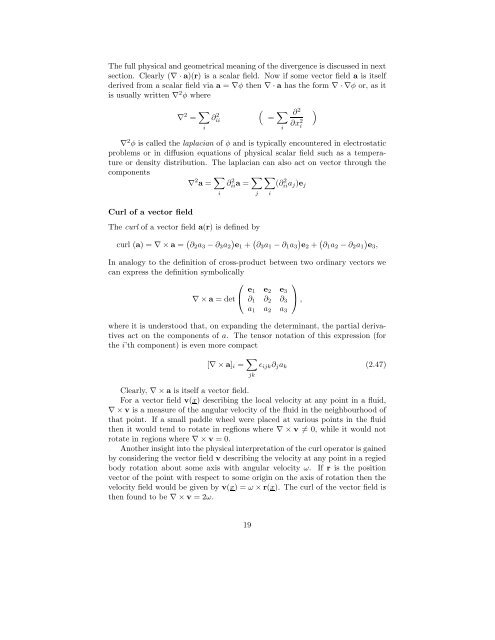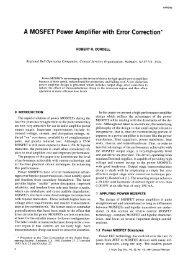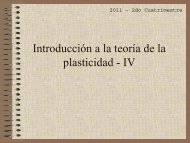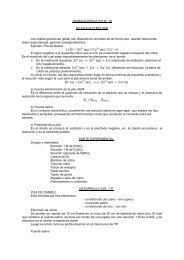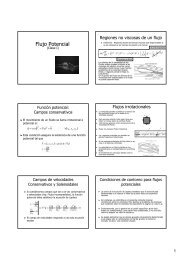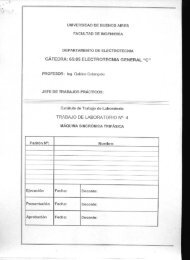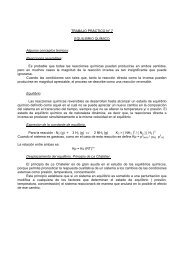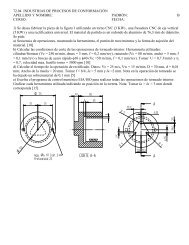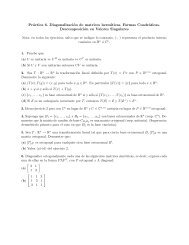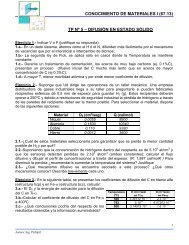Introduction to vector and tensor analysis
Introduction to vector and tensor analysis
Introduction to vector and tensor analysis
You also want an ePaper? Increase the reach of your titles
YUMPU automatically turns print PDFs into web optimized ePapers that Google loves.
The full physical <strong>and</strong> geometrical meaning of the divergence is discussed in next<br />
section. Clearly (∇ · a)(r) is a scalar field. Now if some vec<strong>to</strong>r field a is itself<br />
derived from a scalar field via a = ∇φ then ∇ · a has the form ∇ · ∇φ or, as it<br />
is usually written ∇ 2 φ where<br />
∇ 2 = <br />
i<br />
∂ 2 ii<br />
<br />
= <br />
∇2φ is called the laplacian of φ <strong>and</strong> is typically encountered in electrostatic<br />
problems or in diffusion equations of physical scalar field such as a temperature<br />
or density distribution. The laplacian can also act on vec<strong>to</strong>r through the<br />
components<br />
∇ 2 a = <br />
∂ 2 iia = <br />
(∂ 2 iiaj)ej<br />
Curl of a vec<strong>to</strong>r field<br />
i<br />
The curl of a vec<strong>to</strong>r field a(r) is defined by<br />
curl (a) = ∇ × a = <br />
∂2a3 − ∂3a2 e1 + <br />
∂3a1 − ∂1a3 e2 + <br />
∂1a2 − ∂2a1 e3,<br />
In analogy <strong>to</strong> the definition of cross-product between two ordinary vec<strong>to</strong>rs we<br />
can express the definition symbolically<br />
⎛<br />
⎞<br />
∇ × a = det<br />
j<br />
⎝ e1 e2 e3<br />
∂1 ∂2 ∂3<br />
i<br />
i<br />
a1 a2 a3<br />
where it is unders<strong>to</strong>od that, on exp<strong>and</strong>ing the determinant, the partial derivatives<br />
act on the components of a. The <strong>tensor</strong> notation of this expression (for<br />
the i’th component) is even more compact<br />
[∇ × a]i = <br />
jk<br />
ɛijk∂jak<br />
∂ 2<br />
∂x 2 i<br />
⎠ ,<br />
<br />
(2.47)<br />
Clearly, ∇ × a is itself a vec<strong>to</strong>r field.<br />
For a vec<strong>to</strong>r field v(x) describing the local velocity at any point in a fluid,<br />
∇ × v is a measure of the angular velocity of the fluid in the neighbourhood of<br />
that point. If a small paddle wheel were placed at various points in the fluid<br />
then it would tend <strong>to</strong> rotate in regfions where ∇ × v = 0, while it would not<br />
rotate in regions where ∇ × v = 0.<br />
Another insight in<strong>to</strong> the physical interpretation of the curl opera<strong>to</strong>r is gained<br />
by considering the vec<strong>to</strong>r field v describing the velocity at any point in a regied<br />
body rotation about some axis with angular velocity ω. If r is the position<br />
vec<strong>to</strong>r of the point with respect <strong>to</strong> some origin on the axis of rotation then the<br />
velocity field would be given by v(x) = ω × r(x). The curl of the vec<strong>to</strong>r field is<br />
then found <strong>to</strong> be ∇ × v = 2ω.<br />
19


